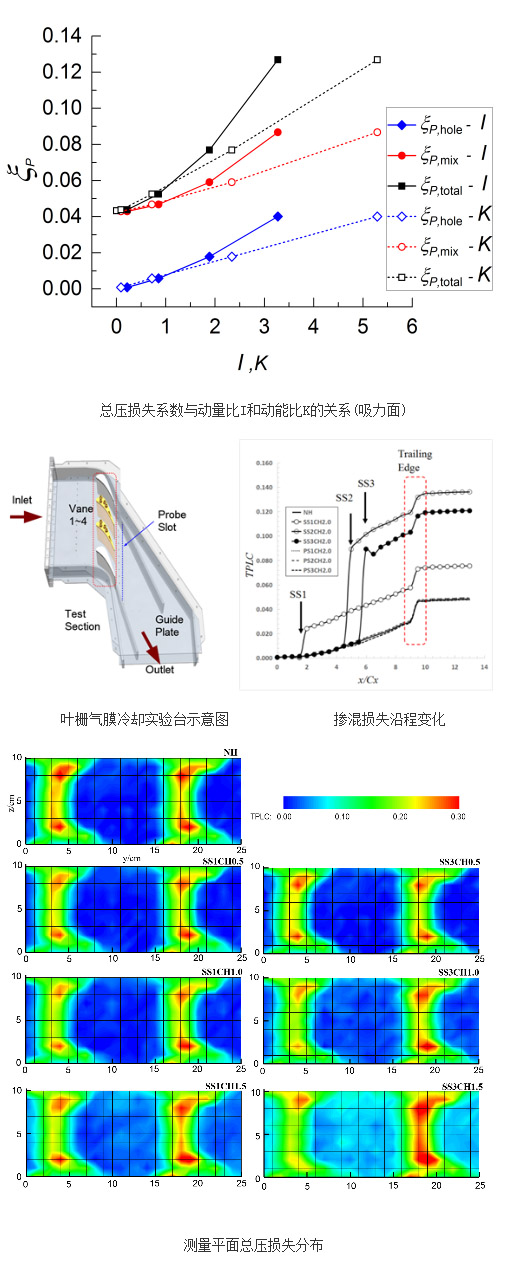Film cooling technology is one of the key technologies of modern gas turbines. Film cooling can reduce the surface temperature of the combustion chamber wall, turbine blades, end walls, etc., and increase the temperature limit of the metal, which helps to further increase the turbine inlet temperature. However, the introduction of film cooling will also lead to the mixture of cold air and the mainstream, resulting in aerodynamic losses. In order to improve the film cooling effect and reduce the film cooling mixing loss, it is necessary to further explore the mechanism of film cooling and mixing. The research team of the Industrial Gas Turbine Laboratory of the Institute of Engineering Thermophysics, Chinese Academy of Sciences used a combination of numerical simulation and experimental measurement to study the film cooling process of a certain level of static blades, and proposed a model for loss of air-cooled blends and loss prediction. Formula, and revealed the blend loss mechanism.
Numerical studies have found that the mixing losses caused by cold air jets on the suction side of the blade are significantly higher than those on the pressure side. The aerodynamic losses caused by film cooling increase continuously with the increase of the blow ratio, which is approximately linear with the ratio of the cooling-mainstream kinetic energy. At high blow ratios, the flow separation of cooling air in the film holes is an important source of aerodynamic losses. The results of unsteady numerical simulation give the formation, development and blending process of cold air jet vortex structures.
In the flat blade cascade cooling test bench, the researchers conducted a film cooling blending loss measurement experiment. The experimental results show that the cold air mixing loss of film holes at different positions on the surface of the blade has different sensitivities to the blow ratio, and the mixing loss caused by the cold air jet at the rear film hole in the suction surface is the largest; under the same blow ratio, The loss of diffused gas film pores is much larger than that of cylindrical gas film pores; the contribution of pore type differences to aerodynamic losses and the contribution of pore row position changes to aerodynamic losses are in the same order of magnitude. Therefore, a reasonable combination of hole type and hole row position can improve the film cooling effect while reducing overall aerodynamic losses. For airless film-cooled blades, nearly one-third of the aerodynamic losses occur in the wake region near the trailing edge of the blade. After film cooling is added, the behavior of the boundary layer on the surface of the blade will be changed, thereby increasing the separation in the wake region. The loss further increased.
The above research work has been supported by key projects of the National Natural Science Foundation of China. The relevant research results have been published in journals and conferences such as Journal of Engineering Thermophysics, Journal of Thermal Science, ASME Turbo 2016, GPPF.

Solar Fan,solar electric fan,solar energy fan,outdoor solar fan
JIANGMEN ESCLIGHTING TECHNOLOGY LIMITED , https://www.jmwindfansummer.com